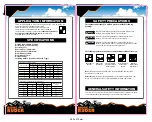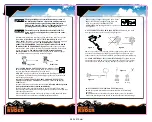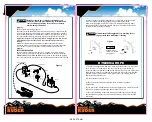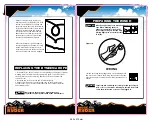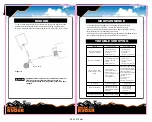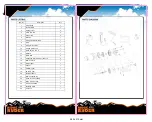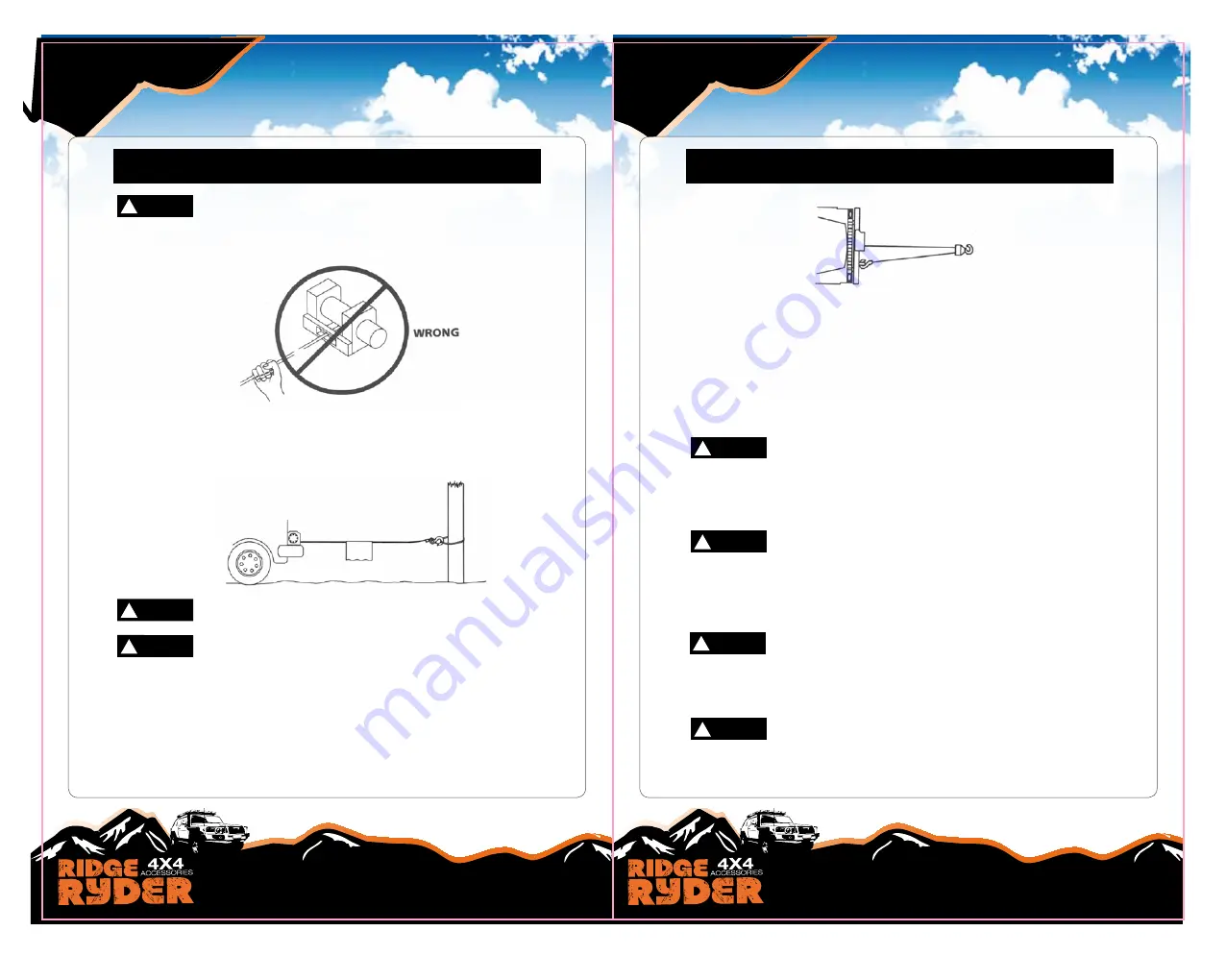
WINCHING
1. Winch with at least five wraps of winch rope around the winch drum. With
fewer wraps, the winch rope could pull loose from the drum under load.
2. When pulling a load, place a blanket, jacket or damper over the winch rope
near the hook end(see Fig.12). This will slow the snap back of a broken winch
rope and help to prevent serious injury.
3. Double line with a pulley block(see Fig.13) to reduce the load on the winch,
winch rope and battery. Double lining will also reduce winch line speed . Be
sure all equipment used meets the winch's maximum line pull rating. When
double-lining, pulley blocks should be rated to a minimum of two times the
winch's line pull rating.
Never touch the winch rope or hook while they are in
tension or under load. Even at rest, the winch may have
the winch rope in tension. Never guide a winch rope under
tension onto the drum with your hands(see Fig.11).
Note the winch's rated capacity and do not exceed it.
Danger
!
(11)
Figure 12
Figure 11
Warning
!
When the load exceeds the maximum rated pull of the
winch, the external circuit breaker will automatically
shut down the winch. To reset the circuit breaker release
the switch button. Note the winch will not be able to
restart normally until the motor heat built up from the
excess strain cools down.
Warning
!
WINCHING
4. If you install a tow hook for double lining, it should be attached to the
vehicle frame.
5. Pull as straight as possible to reduce the buildup of winch rope on one end
of the drum.
6. The vehicle engine should be running during winch operation. If
considerable winching is performed with the engine off, the battery may be
too weak to restart the engine.
Do not disengage clutch under load, If your winch is
equipped with a freespool clutch, be certain that there
is no tension on the winch rope when you disengage the
clutch. Before winching a load , be sure the clutch is fully
engaged.
Danger
!
Never rely on the winch to hold a load in place . None of
our winches are designed for load-holding applications
and may unwind or fail due to shock loading as the load is
being transported. The load should be secured by other
means, and the winch hook detached from the load.
Danger
!
Use a pulley block to avoid winching at sharp angles.
Uneven layering will cause serious damage to the winch
and winch rope. It can be corrected by securing load,
spooling out the winch rope and repositioning it to the
opposite end of the drum.
Caution
!
Use the winch to move the load. Do not attempt to assist
the winch by moving the vehicle. The combination of the
winch and vehicle pulling could overload the winch rope
and the load could break the winch .
Warning
!
(12)
Figure 13
WINCHING
1. Winch with at least five wraps of winch rope around the winch drum. With
fewer wraps, the winch rope could pull loose from the drum under load.
2. When pulling a load, place a blanket, jacket or damper over the winch rope
near the hook end(see Fig.12). This will slow the snap back of a broken winch
rope and help to prevent serious injury.
3. Double line with a pulley block(see Fig.13) to reduce the load on the winch,
winch rope and battery. Double lining will also reduce winch line speed . Be
sure all equipment used meets the winch's maximum line pull rating. When
double-lining, pulley blocks should be rated to a minimum of two times the
winch's line pull rating.
Never touch the winch rope or hook while they are in
tension or under load. Even at rest, the winch may have
the winch rope in tension. Never guide a winch rope under
tension onto the drum with your hands(see Fig.11).
Note the winch's rated capacity and do not exceed it.
Danger
!
(11)
Figure 12
Figure 11
Warning
!
When the load exceeds the maximum rated pull of the
winch, the external circuit breaker will automatically
shut down the winch. To reset the circuit breaker release
the switch button. Note the winch will not be able to
restart normally until the motor heat built up from the
excess strain cools down.
Warning
!
WINCHING
4. If you install a tow hook for double lining, it should be attached to the
vehicle frame.
5. Pull as straight as possible to reduce the buildup of winch rope on one end
of the drum.
6. The vehicle engine should be running during winch operation. If
considerable winching is performed with the engine off, the battery may be
too weak to restart the engine.
Do not disengage clutch under load, If your winch is
equipped with a freespool clutch, be certain that there
is no tension on the winch rope when you disengage the
clutch. Before winching a load , be sure the clutch is fully
engaged.
Danger
!
Never rely on the winch to hold a load in place . None of
our winches are designed for load-holding applications
and may unwind or fail due to shock loading as the load is
being transported. The load should be secured by other
means, and the winch hook detached from the load.
Danger
!
Use a pulley block to avoid winching at sharp angles.
Uneven layering will cause serious damage to the winch
and winch rope. It can be corrected by securing load,
spooling out the winch rope and repositioning it to the
opposite end of the drum.
Caution
!
Use the winch to move the load. Do not attempt to assist
the winch by moving the vehicle. The combination of the
winch and vehicle pulling could overload the winch rope
and the load could break the winch .
Warning
!
(12)
Figure 13
280 x 215mm
Summary of Contents for 341685
Page 1: ...280 x 215mm ...


